Montana In Thirty Years: Wolves
Montana In Thirty Years: Wolves
An Interview With Ty Smucker
Ty Smucker is a Wolf Management Specialist with Montana Fish, Wildlife & Parks, responsible for monitoring and managing wolves in North-Central Montana, east of the Continental Divide. Ty has lived in Montana for over 20 years and has been involved in monitoring wolves for over 15 years. He completed his Master’s in Wildlife Biology at the University of Montana in 2007. As a wildlife professional, Ty is most interested in understanding predator-prey interactions, monitoring and managing populations, and resolving human-wildlife conflicts. He lives on a small farm near Freezeout Lake, with a view of the Rocky Mountain Front, and enjoys exploring Montana’s public lands and waters with his family and friends. |
The year is 2050. What does the Montana wolf population look like?
First, it is important to consider where we are currently with wolves and how we got here. Thirty years ago, gray wolves were naturally recolonizing northwestern Montana, through dispersal from Canada and reproduction among several packs already established in the state. By the time the federal wolf reintroduction effort was underway, Montana already had a minimum of 66 wolves. Coincidentally, between 1995 and 1996, a total of 66 wolves captured in Canada were reintroduced into Yellowstone National Park and wilderness areas in Central Idaho by the U.S. Fish & Wildlife Service. Since then, wolves have continued to reproduce and disperse into unoccupied areas.
For the past decade, the number of wolves known to be living in Montana has hovered around 500-600. That is the minimum that we knew about; i.e. the number that were physically counted. Population model estimates of Montana’s actual number ranged between ~800-1,000 since 2009; those numbers may be slightly higher. The most recent minimum count (2015) of wolves living in the entire Northern Rocky Mountain Recovery Area—which includes Montana, Idaho, Wyoming, and eastern Oregon and Washington states—was over 1,900 in a minimum of 316 packs. We have successfully maintained a healthy wolf population in Montana, and throughout the Northern Rocky Mountains, for more than fifteen decades.
Over the past decade, wolves have filled in and occupied most of the suitable forested habitat in western Montana and will likely maintain their current distribution barring a concerted effort to reduce numbers and range. The large herds of bison that once roamed the prairie have been replaced by livestock and agriculture, making it unlikely that wolves will inhabit eastern Montana in significant numbers. Considering their ability to travel long distances, dispersing wolves are likely to show up just about anywhere in Montana. However, it is unlikely that they will establish packs and persist in high-risk areas without abundant natural prey and shelter.
I expect that the wolf population in Montana will continue to be managed sustainably over the next 30 years, whether the population consists of several hundred or 1,000 wolves.
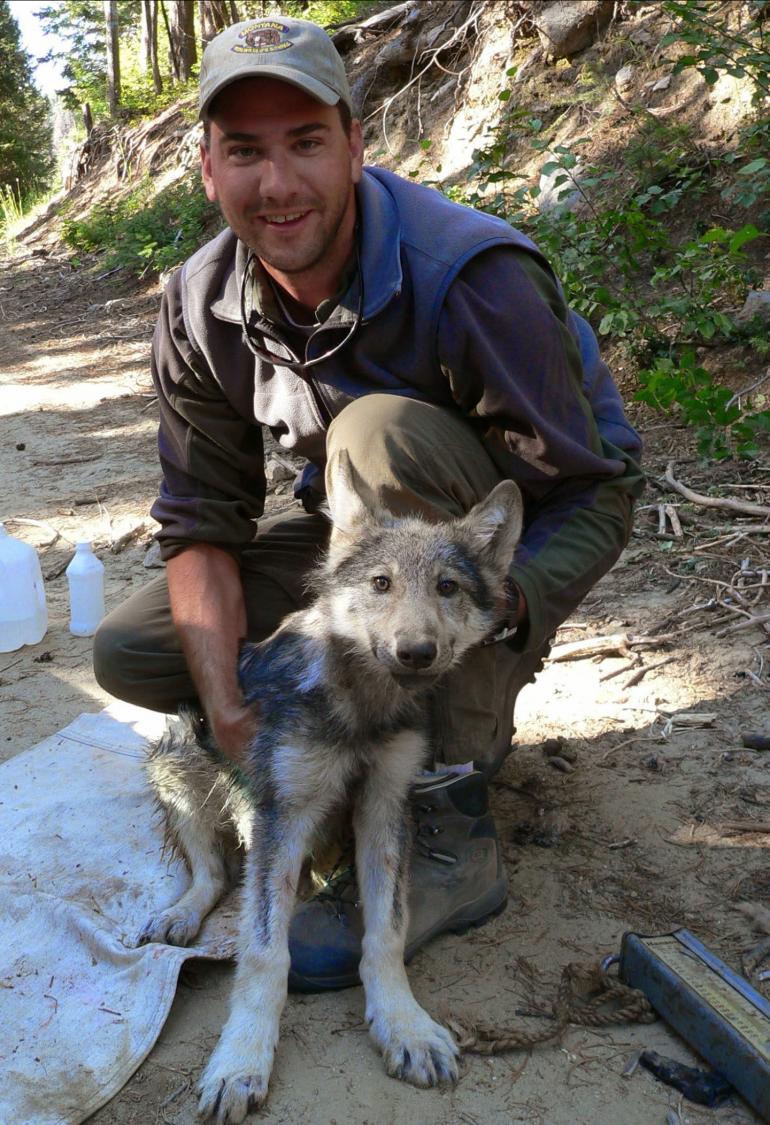
How does wolf hunting look different in 2050?
Hunting and trapping are integral parts of our heritage and harken us back to our hunter/gatherer roots. For many, these pastimes are as much about getting out in the wild as about using one’s skills, cunning, and instincts to stalk or catch prey. For some, hunting or trapping a large predator represents the ultimate test of these skills, pursuing an animal that could also be hunting you. For others, pursuing predators, particularly wolves, is more about protecting deer and elk populations.
Montana manages wolves in much the same way that it manages black bears and mountain lions, through regulated seasons and harvest. Montana wrapped up its tenth season of legal wolf harvest this March. Since 2012, when trapping was allowed as well as hunting, an average of 245 wolves have been legally harvested here each year. Over 2,000 wolves have been legally harvested by hunters and trappers in Montana since delisting. The primary source of mortality for wolves across Montana is human-caused mortality, primarily hunting and trapping. Before legal harvest seasons, their primary mortality source was removal following livestock depredations. With hunting and trapping on the scene, these removals have decreased.
Where wolves and livestock coexist, there will be conflict. Once wolves start killing cattle, it can be almost impossible to discourage them from doing it again. Lethal removal is the most effective and efficient way to stop chronic livestock depredations. As wolf packs get larger, there are more mouths to feed and the likelihood of getting in trouble with livestock increases. As wildlife managers, we would rather see hunters and trappers harvest some of the individual wolves from these packs than see entire packs removed after they have started killing livestock.
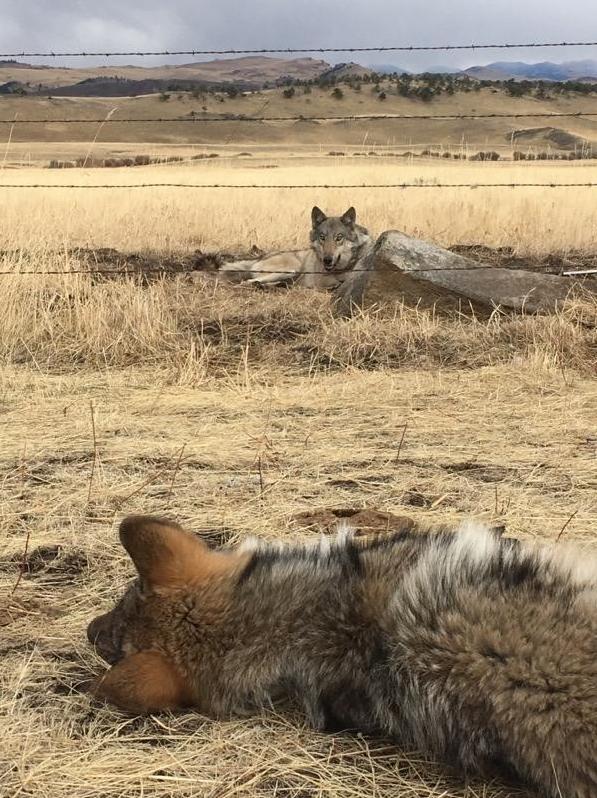
In Yellowstone National Park, the primary mortality source is being killed by other wolves. When this happens there, it is viewed as a function of the natural order of things; wolves defending their territories and resources from intruders. This is in stark contrast to the reactions we see when a Yellowstone wolf ventures out of the park and is shot. Similarly, seeing wolves or bears bring down an elk or bison in Yellowstone is exciting. Humans are fascinated by predation! Many have a strong urge to participate in the act of predation through hunting.
Looking 30 years ahead, we could lose wolf hunting and trapping as a management tool, due to change in public opinion. Wolves have expanded into Washington, Oregon, and now California. These states have rural areas with many of the same wildlife issues we face in Montana, but they also have larger, more urban populations with diverse opinions on wildlife-related issues. Hunting and trapping of some species, including mountain lions, has been restricted or eliminated, and it will be interesting to see how they deal with increasing wolf populations.
Based on today’s trends, how do you think attitudes will have changed toward wolves in 2050?
Recent surveys showed that although tolerance of wolves in Montana was relatively low (<30%), it increased slightly over just five years with their public hunting and trapping. These surveys also showed increased satisfaction with wolf hunting regulations among hunters and landowners. Management of wolves will continue to be a contentious issue in Montana. Many of the differences in opinions regarding wolves and wolf management are deeply ingrained and likely to persist.
If you were looking back in time from the year 2050, what is the one thing you wish we could have done differently with our wolf populations?
Honestly, after much reflection, I would say that the reintroduction of translocated wolves in the Northern Rockies by the federal government may not have been the best path to their recovery and acceptance in the West. Given their reproductive and dispersal capabilities, and how they have repopulated the landscape over the past 25 years, it is very likely that we would have about the same number with roughly the same distribution throughout the Northern Rockies, regardless of whether reintroduction occurred. The population naturally expanded to over 4,000 in northern Minnesota, Wisconsin, and Michigan; it appears that wolves are perfectly capable of recovering their populations.
On the flip side, wolf reintroduction in Yellowstone provided a massive boost to visitation and the local tourism economy, at a time when elk numbers had been way above carrying capacity for far too long, resulting in significant habitat degradation and high elk mortality rates during harsh winters. Considering the tremendous effort that went into exterminating predators in Yellowstone, it does seem appropriate to have reconciled the past by bringing wolves back to the park.
Having a healthy wolf population in Yellowstone alone, though, does not constitute a recovered, self- sustaining population in the West. Postage stamp conservation generally doesn’t cut it...although Yellowstone is undoubtedly a large stamp. Reintroducing wolves to central Idaho may have been less justified and has been more controversial. However, in the context of recovering a viable, connected wolf population in the Northern Rockies, it made sense biologically.
The long delay in delisting, due to repeated legal challenges, likely did considerable damage to public attitudes toward wolves and other carnivores and increased animosity toward the federal government in the West. It will be very interesting to see how grizzly bear recovery moves toward delisting as populations continue to expand.
Can you make any predictions as to how technology will have changed and improved the management of wolf populations in Montana in 2050?
Twenty years ago, I was looking into using military-style drones for monitoring wildlife and habitat. I talked to one company that built drones for motion picture companies and was told they could probably build me a prototype for around a million dollars! Thanks to the highly competitive and innovative market for professional and consumer-level drones, this technology has advanced rapidly since then, and prices have dropped dramatically. Today I am a licensed small Unmanned Aerial Vehicle pilot with a drone that costs less than a decent pair of binoculars! Like GPS units, binoculars, cameras, tablets, and smartphones, drones are rapidly becoming another tool in the wildlife biologists’ toolbox.
I have used drones to count wolf pups at den and rendezvous sites, to count elk, deer, and bighorn sheep, as well as nests of various birds in marsh complexes. In combination with precise location data from GPS collars with satellite uplink capabilities, we can observe wolves by flying drones over potential kill sites or resting areas. Currently, there are several groups of researchers and engineers working on radio telemetry-capable drones to allow biologists to locate and observe radio-collared animals in real- time. In the future, propeller noise could be significantly reduced or eliminated to minimize potential
disturbance to wildlife. If this happens, we could use drones equipped with dart guns to capture wildlife for research and monitoring, reducing the use of traps and snares.
It is unlikely that wolves will change much over the next 30 years, provided they have space to continue doing their thing. New technology may allow us to collect data more efficiently, with greater detail, precision, and accuracy, but many of the questions will essentially remain the same. I am hopeful that advances will also help with reducing livestock conflicts with wolves and other large carnivores.
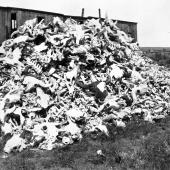




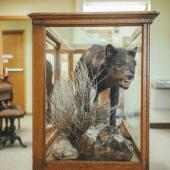



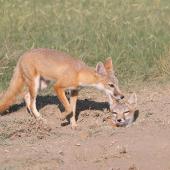

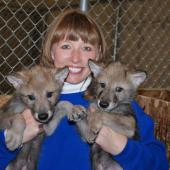
Leave a Comment Here